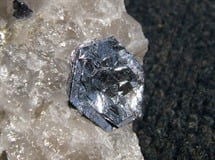Category:
ArticlesThe technology described by EPFL has 5 times the light sensitivity of current technology and would allow usable CCTV imaging down to 0.002 lux – the equivalent of starlight – without using noise-generating amplification techniques, slowing down the shutter speeds or using external light sources.
The objective of the EPFL researchers was to demonstrate molybdenite’s potential in image sensors. For this reason, their sensor only has a single pixel yet it needs 5x less light to trigger a charge transfer than the silicon-based sensors that are currently available.
“Our main goal is to prove that MoS2 is an ideal candidate for this kind of application,” explains EPFL researcher, Andras Kis.
Molybdenite’s extraordinary properties make this performance possible. Like the silicon used in currently available sensors, molybdenite requires an electric current, which comes from the battery. To generate a pixel, the charge generated by the light energy must be greater than the threshold current from the battery.
A single-atom layer of molybdenite requires only a very small electric charge to function. Because of this, it takes much less light energy to reach the threshold needed to generate a pixel. MoS2 is a naturally abundant, inexpensive material. In addition, Kis explains, the prototype doesn’t require any other semi-conductors, which should greatly simplify manufacturing processes.
Click to Bookmark Post
Post Bookmarked
32.4
C
Sydney
31.5
C
Canberra
31
C
Darwin
21.3
C
Hobart
24.7
C
Perth
30.6
C
Brisbane
20.1
C
Auckland
18.1
C
Melbourne










